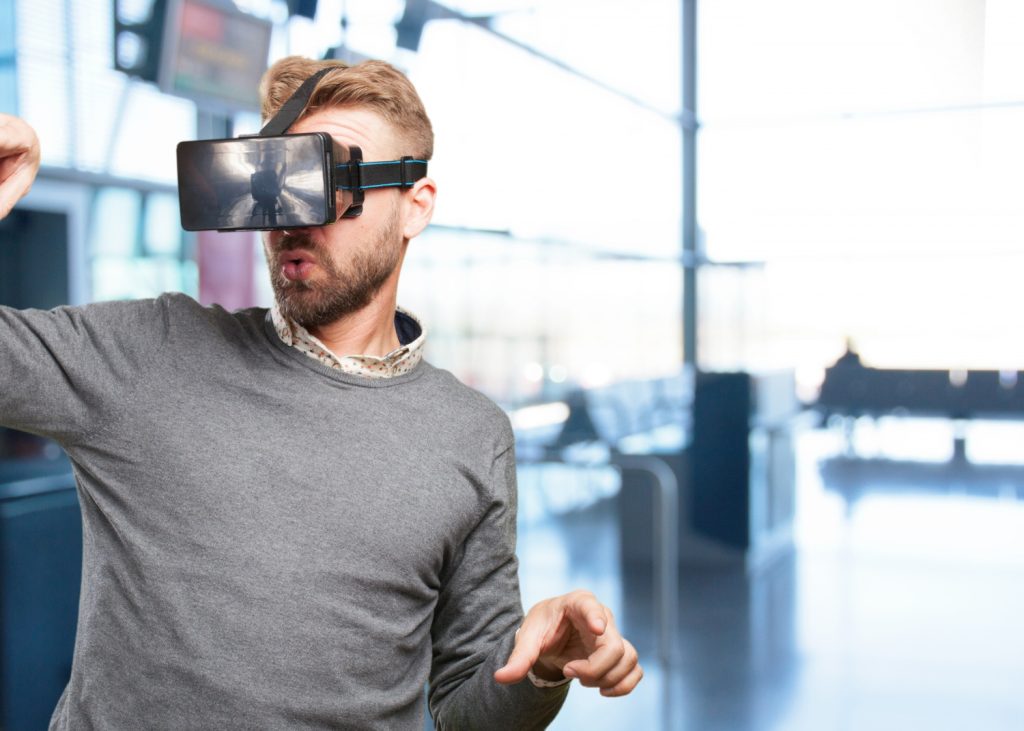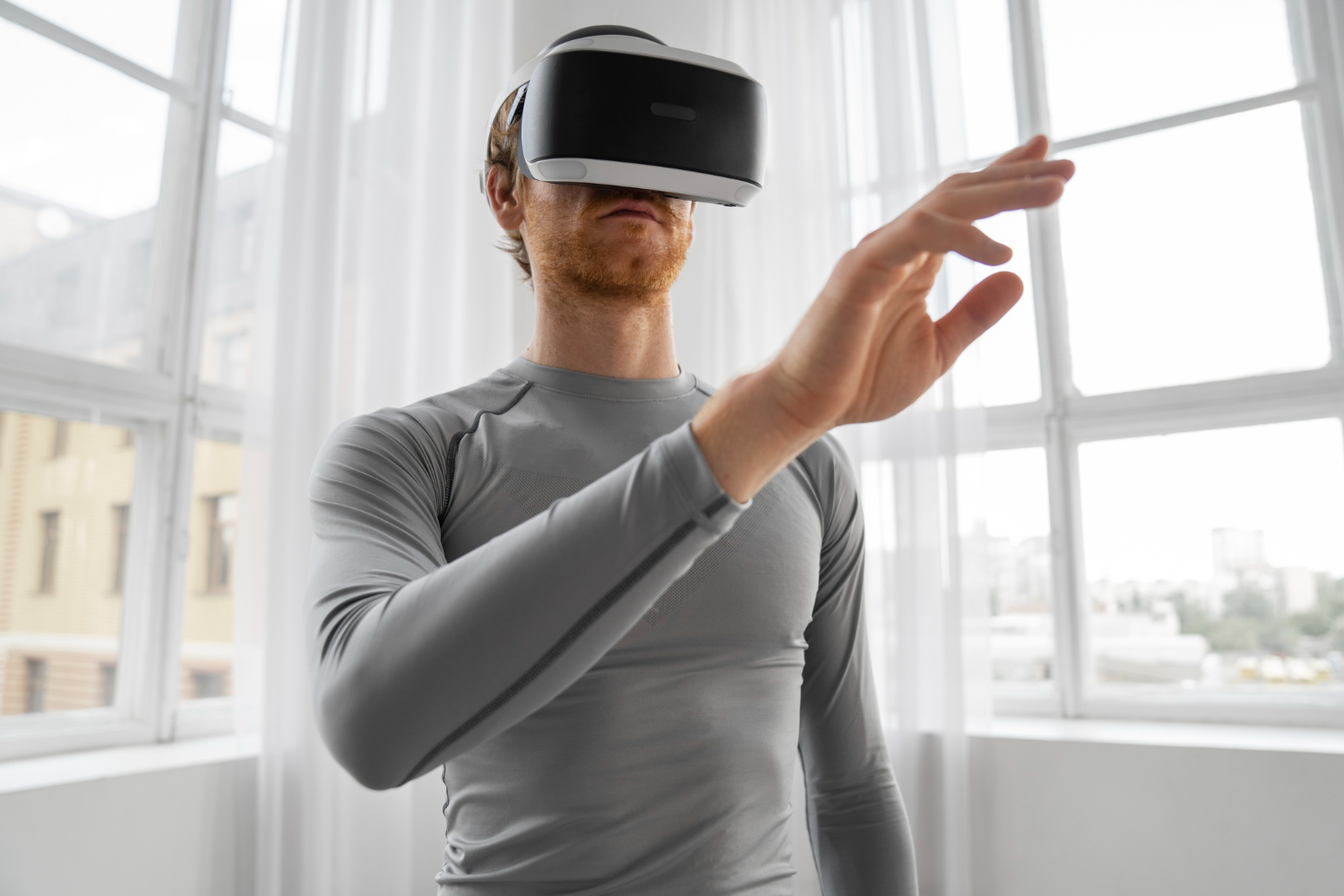Virtual reality (VR) technology has changed how fans interact with live sporting events. From the comfort of their homes, fans can now have an immersive experience that makes them feel like they are sitting right in the premium hospitality boxes of top stadiums or ringside. Fans can now enjoy sporting events from any angle and location without being restricted geographically or by view. virtual hospitality utilizes high-end VR headsets, sophisticated audio capture devices, and real-time data integration for seamless multi-sensory experiences. Every moment is recreated with astonishing realism, from the roar of the crowd to the excitement of last-minute goals or home runs that clinch championships. In a bid to improve their revenues and expand their fan base, sports leagues and event organizers are turning to premium VR hospitality as a hybrid solution that integrates modern VR technology with live sporting events. Major sports leagues started implementing VRExcitement and VR Sphere for remote viewers, making them feel like they’re in the arena’s premium boxes.
A Brief History of Virtual Hospitality

The first embodiments of virtual hospitality can be traced back to attempts in event broadcasting using 360 cameras and basic VR headsets. These early attempts were innovative for their time, but the experience was often disappointing due to resolving power, latency, and audio issues. With the progress of GPUs, VR display technology, and low-latency streaming protocols in the last decade, sports viewing has turned virtual. Modern headsets come with ultra-high-definition displays, over 90 Hz refresh rates, and smooth, responsive better-internal sensors tracking. In parallel, sports broadcasters have built dedicated VR capture rigs—arrays of high-resolution cameras and spatial audio microphones—to record events from multiple angles and seam footage in real time. This provides an immersive environment that now for almost all intents and purposes replicates being there live, with advanced replays, multi-angle viewing, and player and game data analytics. If the technology continues on this path, virtual hospitality will surely become the norm in enjoying live sports.
Key Features of Premium VR Headsets
Headsets for VR use differ fundamentally, and so do premium models inline with virtual hospitality. First, clarity of display is unmatched: 4K Dual OLED panels or microLED arrays ensure that visuals are crisp, colors vibrant, and contrast deep bringing stadium gulf and players uniforms to life. Second, comfort and ergonomics are crucial for prolonged viewing sessions; adjustable head straps, weighted balance, and replaceable face interfaces enhance fatigue and tangible immersion. Third, low latency connectivity, often brought forth by Wi-Fi 6E and dedicated millimeter wave, ensures that viewers remain in sync with live action without lag. Fourth, integrated or delivered via high fidelity earbuds, spatial audio systems reproduce distant chants together with the sound of falling bats. And lastly, on headset controls or via companion apps allow users to switch camera angles, see real time stats, and interact with fellow virtual spectators via voice chat, or digital emotes. Combining all these features transforms passive viewing into an active customizable experience. Premium VR headsets transcends conventional viewing standards.
Improving Fan Interaction With Engaging Activities
Virtual hospitality is much more than providing a clear stream; it is about bridging the emotional gap between the fans and the teams. Interactive elements like synchronized replays, behind-the-scenes cameras focusing on specific players, and tactical breakdowns allow viewers to appreciate parts of the game that they cannot observe from a single angle. Friends and colleagues can meet in virtual private suites where they can lounge together, react live, and order food and drinks through in-stadium e-commerce portals. Loyalty programs can turn attendance into a game, giving fans virtual tokens, badges, or private calls with the sportspeople. Sponsors and advertisers have an opportunity to promote their brands in immersive ways by putting virtual banners on the scoreboard and building brand lounges, while analytics dashboards monitor their views or activity and capture data about preferences and behaviors. These solutions increase personalized community engagement that broadcasted games cannot offer.
Integrating Virtual Reality in Hospitality Services at Stadiums
The deployment of virtual hospitality services in stadiums requires intense coordination between the venue operators, technology suppliers, and broadcasting partners. Relentless streaming for thousands of simultaneous virtual-reality (VR) viewers requires high-bandwidth infrastructure, which includes fiber-optic backhaul, edge-computing nodes, and localized content delivery networks. Capture systems employ the use of multiple camera arrays, depth sensors, and ambisonic microphones, which are integrated on-site, along with precision time protocols for synchronizing audio and video components to maintain alignment. GPU farms perform real-time stitching or merging of multiple feeds, encoding, and uplinking, which diminishes latency between live action and headset delivery and improves user experience. To increase revenue, barriers can be placed on the access levels of VRs, ranging from “virtual grandstand” basic access to all-encompassing VIP experiences including exclusive pre-game press conferences, post-match analysis, and behind-the-scenes tours. Smooth service during the rollout requires staff training to assist virtual attendees with in-app purchases, troubleshooting, and deal facilitation. Workflow processes and user experience can be improved by starting small with pilot testing at marquee events and gradually scaling them across various sports and venues.
Addressing Technological and Logistical Issues
While promising, video conferencing and virtual hospitality still face some hurdles. Heavy internet traffic can severely affect video quality and create buffering problems during viewing. Consistently achieving ultra-low latency on consumer internet connections requires advanced delivery systems and adaptive bitrate streaming algorithms. Affordability of headsets still remains an issue with enterprise-grade devices providing the best experience but mass acceptance requiring more accessible hardware. Content rights also provide additional issues because leagues and broadcasters have to negotiate between traditional broadcast deals and new VR distribution models. On the user side, motion sickness may impact some viewers which requires comfort mode settings such as slow rotation of peripheral imagery or stationary reference frames. Accessibility issues such as accommodating viewers with hearing or sight disabilities may need audio description, customization of subtitle text, and different levels of contrast to the text and background. Solving these issues requires an ongoing investment in research and development, flexible business strategies, and coordination between the sports, media, and technological worlds.
Vitrual Sports Hospitality Trends
The use of modern technology, such as enhanced 8K capture cameras and AI driven upscaling software, will surely create sharper visuals. Haptic feedback devices such as vests, gloves and chairs can create virtual reality simulations of feeling the turf, as well as vibrations of crowds. Mixed reality (MR) goggles will integrate live action with virtual tools that provide coaching, predictive analytics, or interactive mini-games to fill the silences. Digital ownership of exclusive virtual seat tickets can be purchased using blockchain ticketing and NFTs claimed by fans, allowing the creation of new economies for fans. Beyond sports, virtual hospitality can be provided for concerts and corporate events, utilzing the same system. With the development of 5G networks, the cost for setting up restores and virtual hospitality will drastically decrease, changing the entire perception of live events.
The unparalleled domain of sports entertainment

Live sporting events have taken on a new level of fan experience courtesy of premium VR headsets, which offer more than just a technological novelty. They provide the ability capturing the essence of digital-first world over. With virtual hospitality, sports organizations are able to deliver awe-inspiring, interactive, social experiences that surpass physical attendance. And, at the same time, expand their fanbase, unlock new revenue channels doing worldwide connection deepening. These barriers may remain fierce, and technical barriers are sure to rapidly advance, diffusing the pace of innovation with every surmount. As integration and availability of VR increases worldwide in the next few years, virtual hospitality will transition from offering sports entertainment “nice to have” functionalities towards turning life enriching tools “must-haves.” Enabling people regardless of their location to boundlessly partake in action.

Leave a Reply